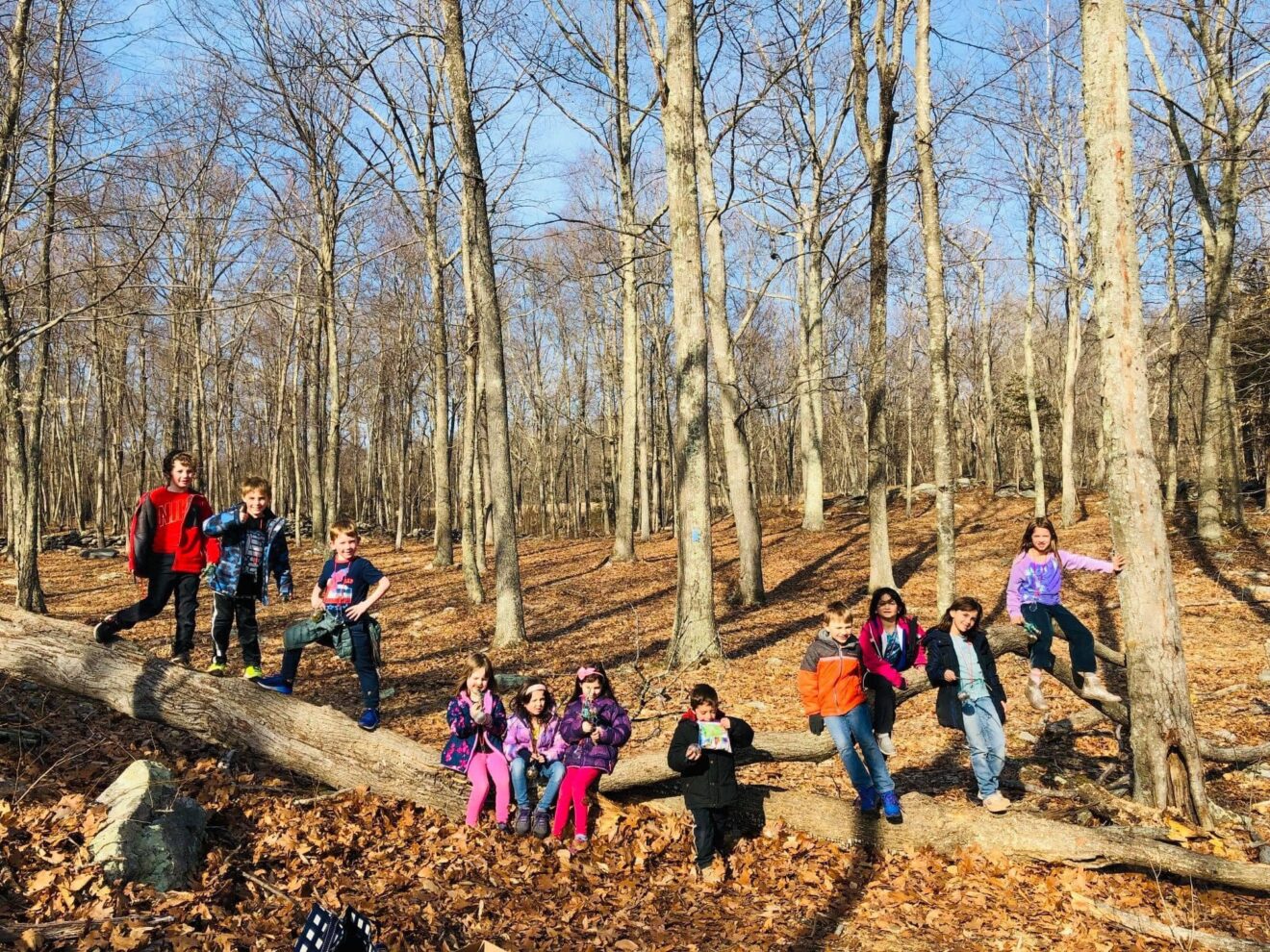“I need to get out of the house or I’m going to lose my mind.”
That is how Kristina White bottom-lines the motivation for a pandemic-driven explosion of visitors to the 20 trails and preserves she oversees as executive director of the Lyme Land Trust.
“I don’t think I’ve ever seen this many people outside in the winter,” White said after returning home from a morning hike herself. “It’s a huge uptick and they’re coming from all over the state. When I drive through town on the weekends the parking lots are full and now it’s on weekdays, too. That’s never happened before.”
Pete Govert has seen the same scenario unfold on the trails managed by the East Haddam Land Trust, where he is president.
“We’re easily seeing double the number of cars we usually see in our parking lots – if not triple,” he said. “We’re always looking for ways to get people in the woods, but we never dreamed it would take a pandemic to do it.”
The newfound popularity of the local trails reflects a booming national trend toward outdoor recreation over the last year or so sparked by the various confines driven by the pandemic, such as working from home and remote learning.
Many national and state parks are overwhelmed with hikers and their cars. Empty racks at bicycle shops document the incredible demand that has produced months-long backorder waits to get a new ride. Sales of snowshoes and backcountry skis are through the roof.
The last year also has also brought an unmistakable diversification of the traditional middle-aged demographic of visitors to the local trails.
“We’re seeing college-age kids and twenty-somethings walking their dogs like we’ve never seen before,” White said. “Families are definitely taking their kids out in the woods more. There’s only so much TV and computer they can watch. And if a kid wants to go out in the woods what parent is going to say no?”
The benefits of simply getting outside for some exercise may seem obvious, but White says many people are just discovering what an antidote it can be to the stress of everyday life, especially now.
“There is scientific proof that getting fresh air and sunshine on your face sustains you and provides mental relief,” she said. “I have a friend who just started hiking and she said it was the first winter in a long time she didn’t feel depressed.”
Govert recalled getting an email recently from an East Haddam woman who said the trails around her house have been a “godsend.”
And Govert said its a conversation that he’s had many times.
The sudden popularity of the trails has prompted some changes for the land trusts, including extra attention to trail maintenance in an effort avoid any potential mishaps.
“We need to make sure more than ever that our trails are cleared and not dangerous,” Govert said, noting that several storms and frequent high winds in the last year kept his stewardship crews busy with chainsaws to clear fallen trees.
The land trust enlists volunteer trail monitors to regularly hike the paths and report any damage.
David Gumbart, director of land management at The Nature Conservancy of Connecticut, said the influx of visitors to their 60 preserves across the state, including several in the lower Connecticut River Valley, spotlights how critical these places are.
“I guess as much as anything, the increased use emphasizes the importance of having places where people can connect to nature, and the responsibility the conservancy has in maintaining our public access preserves,” he said.
White said another big positive sparked by the pandemic has been a significant increase in membership and donations to her organization, as well as interest in their website and social media pages.
COVID-19 has also prompted the trust to pivot away from traditional in-person events in favor of video and virtual presentations, such as a talk with a wildlife biologist and the installation of trail cameras designed to capture images of animal visitors to the preserves.
“There’s been a huge interest in the trail cams,” she said. “It’s all part of reaching out to members to keep them interested.”
With so many more children on the trails, the land trust also organizes youth-oriented events like “gnome hunts” that challenge youngsters to find the elfin creatures placed along trails with the help of a special map.
This weekend will mark the launch of The Sapling Club, offering outdoor adventures for elementary-aged children.
No one knows for sure whether the unprecedented activity on the trails will keep up as the pandemic fades.
But White believes that for many, and especially the young, the seeds have been planted for a long-term interest in nature and exploration.
“That’s the one silver lining out of all of this,” she said. “People are finally experiencing and appreciating the outdoors and it’s really great to see. That’s the whole reason we do this.”
Photo credit: Lyme Land Trust

